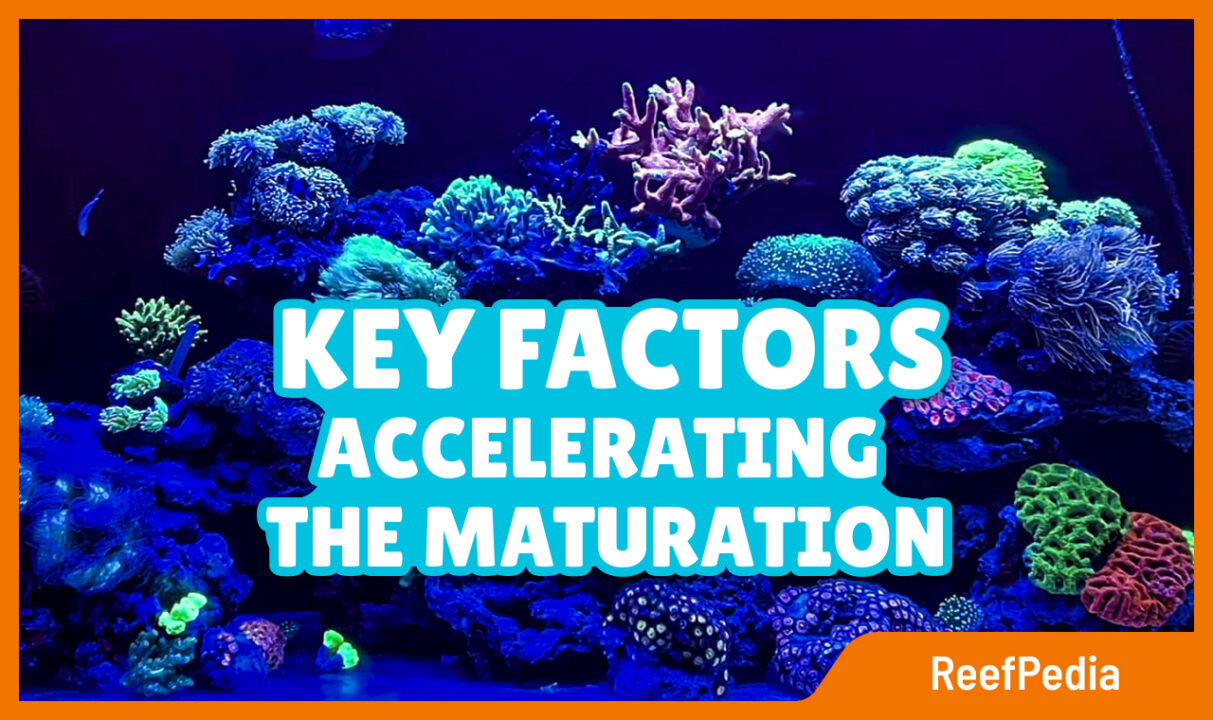Table of Contents
This article is dedicated to beginner aquarists. Marine aquaristics requires patience from hobbyists. The maturation process of a saltwater tank is a lengthy one – the first phase of maturation usually lasts between 4 and 12 weeks – and cannot be skipped.
However, there are ways to speed up this process slightly. Once it is complete, the aquarium will be ready for the self-sustaining process of biological filtration, which is essential to maintain stable living conditions for corals and fish.
Below I will outline some key elements that will speed up this process to some extent.
Firstly: live rock
In order to speed up the maturation process, or rather not to prolong it too much, the use of live rock is recommended. Properly transported or properly prepared, live rock contains nitrifying bacteria that participate in the biological filtration of the aquarium water, a very important process called the nitrogen cycle, during which toxins (e.g. ammonia) are broken down into substances that are harmless to the marine ecosystem. Dry rocks do not contain these bacteria and must therefore be populated with them during the maturation process. Due to the price and difficulty of purchase, many aquarists nowadays start their aquariums on dry rock. If we do not have the opportunity to buy live rock and we start on a dry or synthetic one, it is worth getting a few pieces of live rock, which we will put in the sump. It will speed up the maturation process.
Good bacteria to start with
A wide range of so-called starter bacteria, which role is to break down nitrogenous compounds, can be found on the aquaristics market. The key strains are Nitrobacter and Nitrosomonas. If you decide on a preparation from a particular company, it is not recommended to use other products in parallel, as they may weaken each other’s properties. Some kits allow the nitrogen cycle to close very quickly and fish can be introduced into the tank after just 24 h, but only the species that are most resistant to the unstable water environment. In addition, a nutrient solution for bacteria can be used, which will obviously accelerate their multiplication. In the initial phase it is all about breaking down ammonia, and in the following days and weeks the bacteria will also be responsible for breaking down faeces or food residues. Recommended bacteria for a quick start are Zeobak, ATM Colony.
Additional filter media
During the maturation process, the sump must also be properly cared for. You can place filter media in it, for example:
Siporax (pressed and fired disc-shaped glass and salt crystals), which will be intensively populated by filter bacteria due to its porosity. During the production process, the salt is washed out, creating channels open on both sides where there are excellent conditions for bacteria to settle. An additional advantage is the small amount of medium required and the consequent saving of space in the sump.
Ceramics: The porous structure of the discs (cylinder shape, balls, etc.) provides a habitat surface for bacteria. This is a popular and inexpensive solution.
Water from a working tank
When choosing water for our tank, we basically have two solutions. The first is RO water to which we will add salt, which is the traditional method that has always been used. The second solution is tested water from an already functioning aquarium, i.e. mature water containing bacteria and micro-organisms. The key is to be sure that you are using water with the correct parameters, from a reliable source from an already mature aquarium. Living water will speed up the start of a new tank.
Additional filtration in the form of a refugium
Information on what a refugium is and how to build one properly can be found on ReefPedia. At this point it is worth mentioning that a refugium can speed up the readiness of the aquarium for settling in, as the refugium will absorb a lot of unwanted compounds while the aquarium is maturing. The algae, instead of growing in the main aquarium, will grow in the refugium. This is a really clever way to speed up maturation.
Summary
Aquarium maturation is an essential process that must occur in a newly established aquarium. With the methods outlined above, we can reduce the process to the necessary minimum and have more control over it. Situations in which the process becomes very protracted are due to mistakes on the part of the aquarist. Often we want to populate the tank as quickly as possible, with corals and marine fauna, but the basic principle of every marine aquarist should be patience and following the rules that previous generations of hobbyists have developed by trial and error. Sudden moves, constant changes in the approach to keeping and the methods used, are not recommended. A period of four to six weeks seems a very short time if we consider that our mistakes can lead to an extension of the process to at least several months.
About the author

Marek Protasewicz
Reefkeeping has been my passion for over 10 years now. I love learning. The hobby has taught me many valuable lessons, patience being the best example. Combining work and passion is my path. I run Crazy Coral, a marine aquarium shop, for a number of years. Building this business from the scratch I learnt from my own mistakes at a heavy cost.
Later I managed a project aimed at development of methods for quick growth of Corals in non-natural conditions. The project was carried out by Get Sales, Poland. Presently, I am responsible for distribution strategy at Reef Factory, of which I am a co-founder. The company produces smart devices for marine aquaristics. The last projects I have been involved in are Social Reef and ReefPedia.



